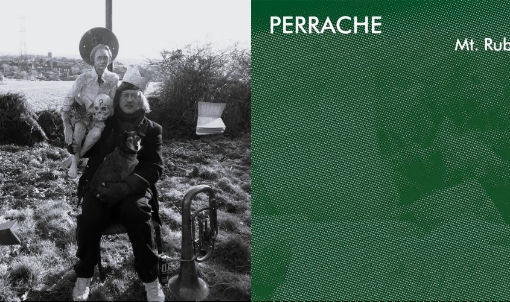The Muslimgauze Preservation Society
 Given a vinyl release nearly two decades after it first appeared – somewhat unusually – as a DAT, Satyajit Eye comprises outtakes from the Vote Hezbollah and Hamas Arc albums. Recorded with engineer John Delf at the Abraham Mosque Centre in Manchester, this album marks a key period in the development of the Muslimgauze sound, as the extensive liner notes on the LP recount, it was the first time Bryn Jones had used a state of the (then) art studio to mix his music.
Given a vinyl release nearly two decades after it first appeared – somewhat unusually – as a DAT, Satyajit Eye comprises outtakes from the Vote Hezbollah and Hamas Arc albums. Recorded with engineer John Delf at the Abraham Mosque Centre in Manchester, this album marks a key period in the development of the Muslimgauze sound, as the extensive liner notes on the LP recount, it was the first time Bryn Jones had used a state of the (then) art studio to mix his music.
The complex interaction of the looped and live percussion ebbs and flows with a particularly recursive tendency, as the dub effects veer in and out of the mix, creating an inspiring blend of the fortuitous and extemporised with the pre-recorded. A prime example is “Tuareg,” which emerges from a flutter of subtly-hesitant clanks to swell into a flurry of clashing metallic motifs which bridge between tabla and other percussive runs in stochastic near-synchrony, drum beats flicking across the stereo spectrum while shimmering bells chime. On this album Jones was also confident enough to let his drums speak for themselves, layered and looped to hold the ground for the wash of sometimes jarring sounds which precess across the audio field. The droning sitar of the title track melds with thunder and ghostly vocals in a melange which thoroughly deserves description as cinematic.
This is perhaps the core of Muslimgauze music – as is well-known, Jones was a longterm supporter of the rights the Palestinian cause, but was neither a Muslim nor a traveller, and his virtual soundtracks for a non-existent travelogue to a place he only knew through sound and political support hold a whole lot to say about the notion of how humans construct artistic versions of their imagined worlds. In this sense, Satyajit Eye is as much a work of speculative fiction as it is one which can be listened to without any reference to Jones’ ideology, one which visualises an idealised version of a very different world to the one in which its creator actually lived. Much music does this, of course, but where in particular this album succeeds is in the clarity of its recording and the willingness of its creator(s) to push hard at the boundaries of what could be achieved in the studio while following in the footsteps of a host of Jamaican and UK dub producers, in technique if not genre. That it is merely the outakes from Jones and Delf’s first recording sessions also suggests that the next port of call for the unfamiliar listener is the other Muslimgauze albums from this period.-Antron S Meister-



